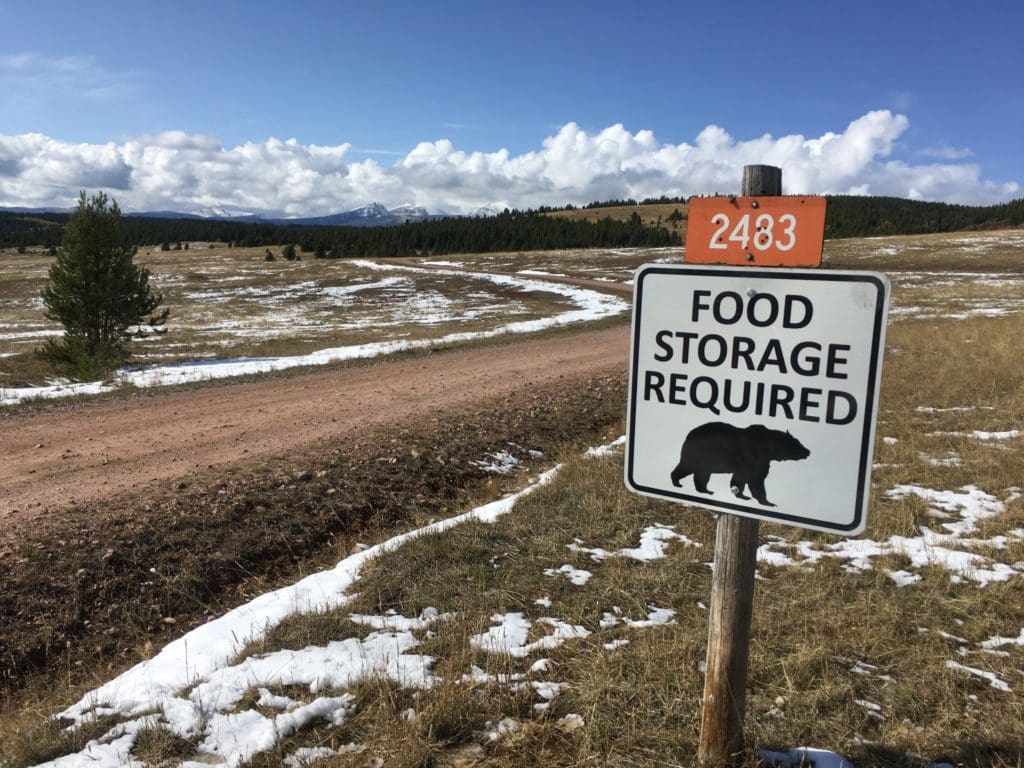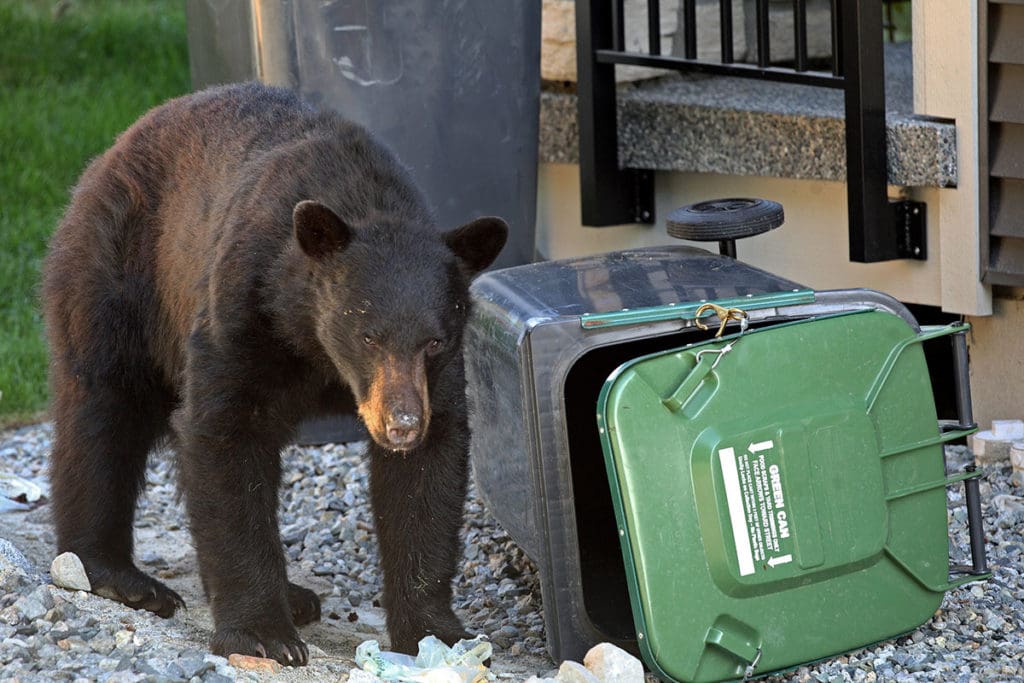This summer, land managers and conservationists are installing a new tool to increase safety for visitors and wildlife in the 1.5 million-acre Colville National Forest.
To sustain the health, diversity, and productivity of the nation’s forests and grasslands to meet the needs of present and future generations, facilities in our national forests play a vital role in helping people stay safe in grizzly country.
To this end, Yellowstone to Yukon Conservation Initiative (Y2Y) partnered with Colville National Forest, Defenders of Wildlife, Interagency Grizzly Bear Committee and Scenic Canyons Recreation Services to fund the installation of 20 food storage lockers. The addition of these much-needed storage lockers means that all front country campsites, as well as heavily-used dispersed campsites, are now secure in grizzly-occupied areas of the Colville National Forest.
These bear-resistant food storage lockers are a tool that works. They simultaneously promote safety and conservation by providing recreationalists with easy-to-use secure food storage that also prevents attracting hungry bears to occupied campsites. Installation of these new lockers is underway and will be complete by the fall of 2021.
“Installing simple yet effective tools like food storage lockers make a big difference in communities and on public lands,” says Jessie Grossman, Y2Y’s U.S. program manager. “This proactive effort by Y2Y, partners, and the Colville National Forest helps people safely enjoy the great outdoors and helps wildlife thrive.”
The Selkirk Recovery Zone is home to approximately 70 to 80 grizzly bears, according to recent numbers from U.S. Fish and Wildlife Service. Individual bears are about equally divided between the Canadian and U.S. portions of the ecosystems.
Human-bear conflicts are a leading cause of human-related grizzly bear deaths. Attractants, such as camper’s food, play a role and can get bears into trouble. Often, bears that access food or campsites are relocated or killed. Tools such as food storage bins and other solutions help in shared spaces. These tools and techniques significantly improve safety for people and wildlife.
“Reducing conflicts between people and bears is so important, particularly for a recovering population like the Selkirk grizzlies. There is tremendous conservation value in providing financial support for infrastructure that effectively prevents grizzlies and black bears from accessing food and other attractants,” says Dr. Zoë Hanley, northwest representative for Defenders of Wildlife. “This is a shining example of proactive management that helps protect people and keeps bears out of trouble.”
The Colville National Forest receives an estimated 211 million visits annually, according to The U.S. Department of Agriculture. As recreation on public lands grows in popularity, campers must be knowledgeable of and follow national forest rules.
“We have noticed a marked decrease in the number of incidents of improperly stored food and other attractants at campsites where the lockers have been installed. Based on the comments we have heard, the lockers have been well-received by the public,” says Mike Borysewicz, Colville National Forest biologist.
In the Colville National Forest, campers must store all food, beverages and other attractants in a hard-sided vehicle or an approved, animal-resistant container when they are away from camp, or asleep.

Food and scented items such as toothpaste, deodorant, etc. should never be brought into a tent. Hikers camping away from their vehicles should suspend their food from a tree branch at least 10 feet off the ground and four feet from the tree trunk. Forest visitors may be surprised to learn that anything with a scent, such as candles, soap, deodorant, or toothpaste, can attract a bear. Pet food, greasy grills, and garbage are all powerful wildlife attractants as well.
The new food storage lockers will provide visitors to the Colville National Forest a safe, convenient way to secure attractants from bears and other wildlife.


